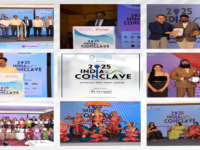Spain’s Navantia, L&T to jointly bid for Indian Navy’s P75 (I) submarine programme

In order to provide six conventional submarines with Air-Independent Propulsion (AIP) while reaching the targeted Indigenous Content, Project 75 (I) requires the Indian bidder to collaborate with a Foreign Collaborator (FC) Image Courtesy ANI
In order to submit a techno-commercial offer for the esteemed P75 (India) submarine programme of the Indian Navy, Spain’s Navantia and Larsen & Toubro signed a Teaming Agreement (TA) on Monday in the premises of the Spanish Embassy here.
The contract was signed in the presence of Augustin Alvarez Blanco, Vice President of Naval Construction and Member of the Board for Navantia, and SN Subrahmanyan, CEO and MD of L&T.
In order to provide six conventional submarines with Air-Independent Propulsion (AIP) while reaching the targeted Indigenous Content, Project 75 (I) requires the Indian bidder to collaborate with a Foreign Collaborator (FC).
Related Articles
“Expected to be valued at over Euro 4.8 billion, the project is India’s largest defence acquisition project. This would also be followed by a 30-year lifecycle sustenance contract of similar value. P75(I) would be the first program to be processed under the ambitious Strategic Partnership (SP) model of the acquisition of the Ministry of Defence. L&T and Navantia signed an MoU for the program on April 11, 2023, at Madrid, which has now culminated in this TA,” L&T said in a statement.
“As per the agreement, Navantia would carry out the design of P75(I) submarines based on its S80 class of submarines, the first of which was launched in 2021 and is undergoing sea trials prior to its delivery to Spanish Navy at the end of 2023,” the statement read.
“Apart from S80 class, Navantia has been involved in the design and construction of Scorpene class of submarines together with DCNS (Now Naval Group) of France, which have been exported to Chile and Malaysia. Navantia has also been involved in the Scorpene submarines (Kalvari class) built in India including handholding of the Indian yard,” it read.
The integration of an AIP system is required by the P75(I) programme. In addition to being the most advanced and effective AIP system in the world, Navantia’s cutting-edge 3rd Generation AIP technology is also the smallest, simplest to use, maintain, and environmentally benign. It uses bioethanol, a readily available, low-cost hydrogen source that doesn’t require any specialised infrastructure, as its supply of hydrogen.
The efficiency of the AIP system is increased by the high hydrogen density of ethanol. Due to its liquid state, ethanol does not provide the dangers that come with storing hydrogen. Additionally, the system may be refuelled anywhere in the world thanks to the widespread availability of ethanol.
Through the Navantia Seanergies subsidiary, L&T and Navantia are also looking to collaborate on further military projects and green energy alternatives, such as offshore wind.
Commenting on the occasion, SN Subrahmanyan, CEO & MD, L&T said, “L&T is proud to collaborate with Navantia for this prestigious program of strategic importance for the nation’s security. Navantia’s glorious 300-year-old track record in naval construction & technical expertise gives us a competitive advantage in this program and offer the Bio-Ethanol Stealth Technology (BEST) and environmentally Green AIP solution. We are committed to providing the most contemporary solution for Indian Navy’s requirements at a competitive price.”
(With agency inputs)

Atul Tiwari is a seasoned journalist at Mumbai Times, specializing in city news, culture, and human-interest stories. With a knack for uncovering compelling narratives, Atul brings Mumbai’s vibrant spirit to life through his writing.







